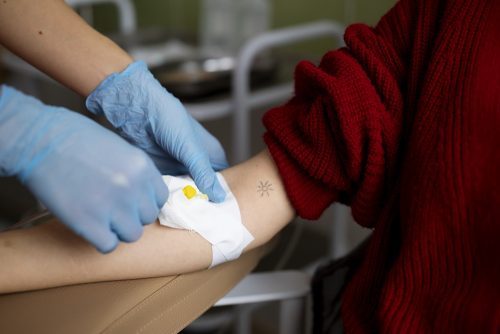Sclerotherapy: An Effective Treatment for Varicose Veins
Sclerotherapy is a popular treatment option for varicose veins. It involves injecting a solution directly into the problematic vein that works to disrupt the lining of the vessels in the vein, causing the vein walls to stick together and seal shut. Those treated veins slowly shrink and disappear, turning into scar tissue that the body removes naturally. Blood is rerouted to healthier veins, and the scar tissue turns to healthy tissue.
This type of vein removal treatment is one of the least invasive, most comfortable, safest and most effective treatments. There is no downtime following the procedure, so it will not disrupt your daily routine, making it a top choice for people who are bothered by their varicose veins, whether simply for cosmetic reasons or they are suffering from the symptoms that are associated with this very common condition.
Understanding Varicose Veins and their Symptoms
Varicose veins are veins that have become swollen and twisted. They most commonly occur in the legs and are caused by weak or damaged valves in the veins, which allow blood to flow backwards and pool in the veins. Varicose veins are often characterized by their bulging, twisted appearance.
Varicose veins are most often found on the legs and feet, but can be found on other parts of the body as well. Aside from looking unpleasant, they may also cause discomfort such as aching, itching, or a heavy feeling in the legs. Some people may experience swelling or discoloration in the affected area as well. In severe cases, varicose veins can lead to skin ulcers or other complications. If you are experiencing any of these symptoms, it is best to speak to a vein expert and learn about your treatment options. Left untreated, varicose veins can lead to more serious health conditions.
Managing Trapped Blood after Sclerotherapy Treatment
After vein sclerotherapy treatment, it is common for some blood to become trapped in the treated vein. This is because the solution used in sclerotherapy irritates the lining of the vein, causing it to stick together and become permanently closed off. While this is part of the healing process, it can sometimes cause blood to become trapped in the vein, leading to discomfort and bruising.
To remove trapped blood after sclerotherapy treatment, it’s important to follow your doctor’s instructions carefully. This may include wearing compression stockings, avoiding strenuous activity, and taking over-the-counter pain relievers as needed. Dr. Susan B Fox and her team at Fox Vein & Laser Experts also typically recommends adding a walking regimen to your daily routine following a sclerotherapy treatment. This helps to promote healthy blood flow and circulation in the legs and feet, and can prevent blood clots from forming during the healing process.
In most cases, trapped blood after sclerotherapy treatment is a temporary side effect and will resolve on its own over time. However, if you experience any unusual symptoms or discomfort, it’s important to speak with your doctor to ensure that there are no complications.
The Recovery Process: Following Doctor’s Instructions
Overall, sclerotherapy is an effective treatment option for varicose veins, and while there may be some temporary discomfort, following your doctor’s instructions can help ensure a smooth recovery.
Conclusion
If you have recently undergone the procedure and are experiencing trapped blood as a result, our team is here to answer questions or perform a consultation to ensure that your veins are healing properly.
If you’re considering sclerotherapy treatment, we can also perform a consultation to determine which type of sclerotherapy vein removal treatment is best for your individual vein health condition. There are many options for vein treatment, and sclerotherapy is one of the best, but can be performed in a number of ways. To schedule an appointment, call our office at 954-627-1045 or use our quick and convenient online scheduler to book.
FAQs
Q: What is trapped blood after sclerotherapy?
A: Trapped blood is the residual blood that remains in a treated vein after sclerotherapy, often leading to a small, raised area or discoloration.
Q: Is trapped blood after sclerotherapy normal?
A: Trapped blood is common after sclerotherapy and is generally not a cause for concern. It usually resolves on its own over time.
Q: How can trapped blood be removed after sclerotherapy?
A: Trapped blood can be removed by draining or aspirating it with a fine needle, a procedure typically performed by your healthcare provider.
Q: When should I seek medical attention for trapped blood?
A: If you experience significant pain, swelling, or signs of infection such as redness and warmth, you should contact your healthcare provider for evaluation.
Q: How long does it take for trapped blood to resolve on its own?
A: Trapped blood usually resolves within a few weeks to a few months as the body gradually absorbs it.
Q: Are there any risks associated with draining trapped blood?
A: Draining trapped blood is generally a safe procedure, but as with any medical procedure, there are small risks of infection or bruising.
Q: Will trapped blood affect the results of my sclerotherapy?
A: Trapped blood typically does not affect the overall results of sclerotherapy and can be managed effectively if needed.

